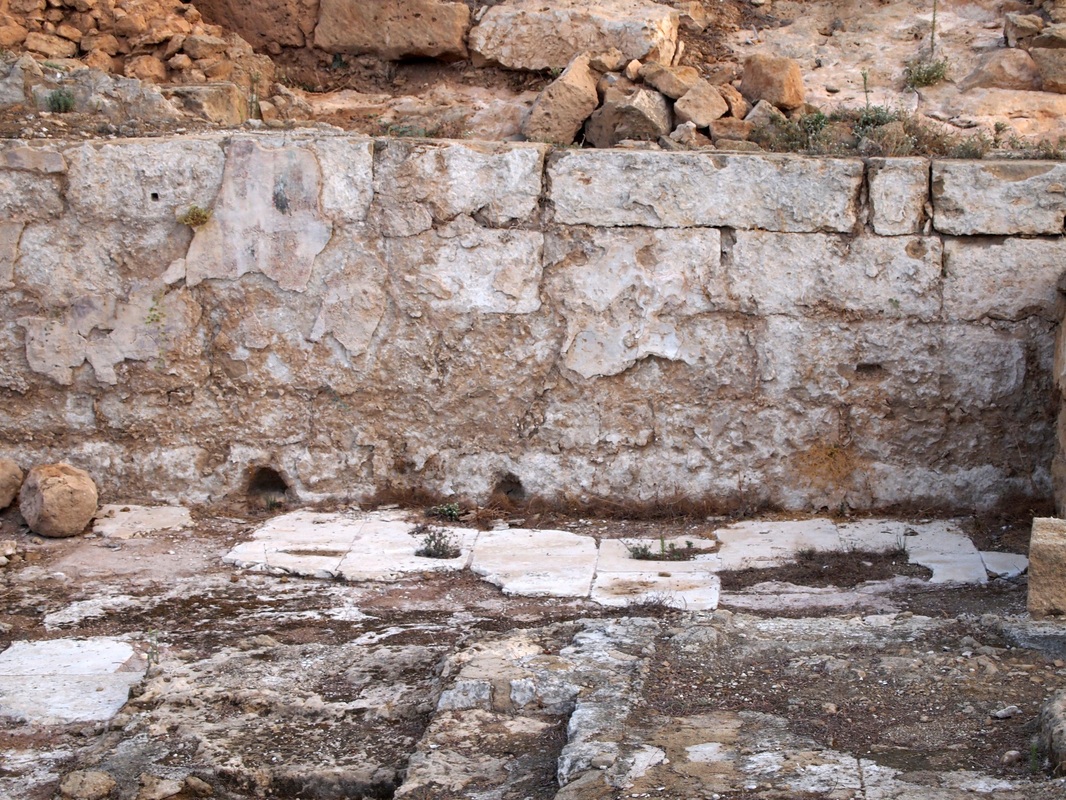
Friday 14 October 2011
Another perfect day in paradise!
Today we bi-podded all the major rocks out of the nymphaeum as well as those we had moved to the Roman road – a total of about 33 in all. So there is now pretty much a free go to clear the nymphaeum and discover what has been under all the rubble.
My specific project this season is to undertake a preliminary physical and chemical assessment of the sediment in the drain alongside the Roman road. Back in 1996 it was discovered that there was a drain in Trench 3A which appeared to run from the nymphaeum to a main drain along the side of the road. The main drain was also found to run into Trench 3B, with an associated feeder drain coming from the southern wall. So far, with the assistance of David and Nicole, we have managed to excavate the exposed part of the main drain and to extend into the drain itself and into the sediment that has accumulated since the drain stopped functioning. We have been successful in taking core and bulk samples out this region. The next step is to open the top of the drain from Trench 10C (Ivana’s trench) and take vertical core samples.
Another interesting thing I have been doing is to see if we can extract images from some of the deteriorated artwork around the site. To do this, I have been using a software program call DStretch. DStretch is an image enhancement program developed by an American by the name of Jon Harman ([email protected] ). Applications to date have been for the most part in relation to rock paintings, however I was interested to see what it might be able to do here. Shown below is normal photo of the mosaic on the floor of the nymphaeum, compared with the same photo which has been DStretched. The treatment brings out some of the mosaic pattern not readily evident to the naked eye.




 RSS Feed
RSS Feed